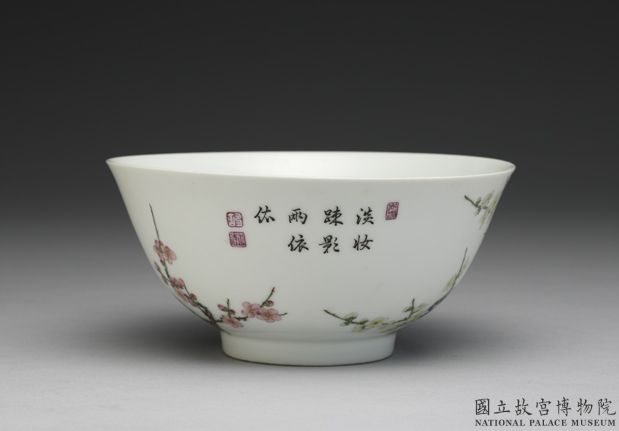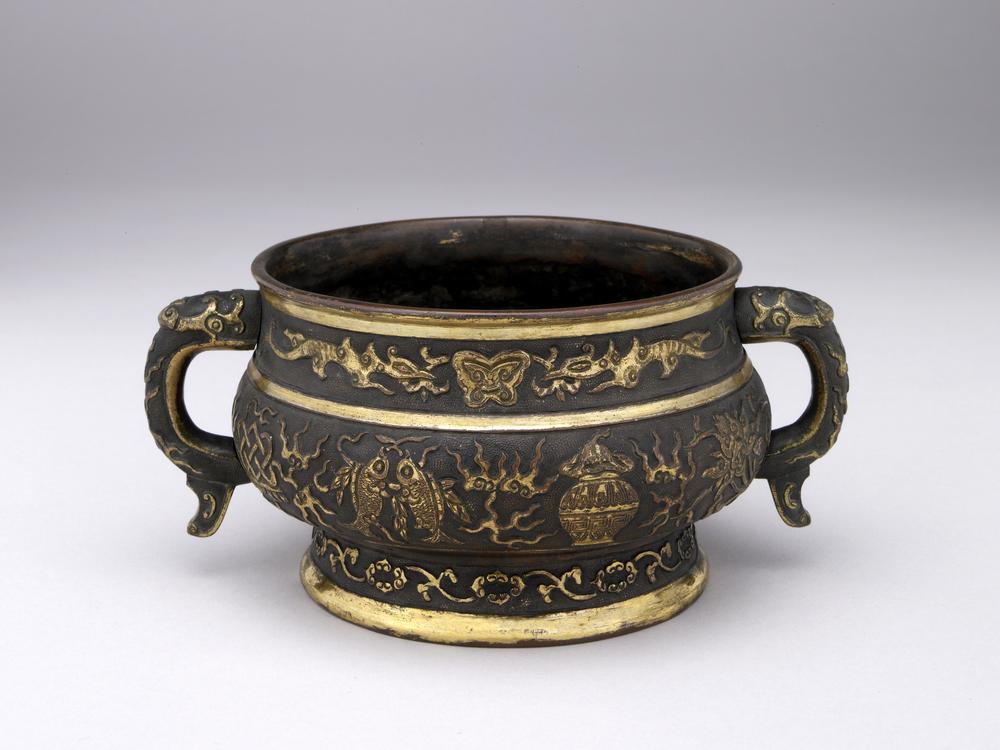Period:Shang dynasty Production date:12thC BC (circa)
Materials:bronze
Technique:cast
Subjects:insect taotie
Dimensions:Height: 27 centimetres
Description:
Ding. Ritual cooking vessel. Decorated with so-called taotie and cicada designs. Made of bronze.
IMG
![图片[1]-ding BM-1947-0712.419-China Archive](https://chinaarchive.net/Shang dynasty/Bronzes/mid_00328313_001.jpg)
![图片[2]-ding BM-1947-0712.419-China Archive](https://chinaarchive.net/Shang dynasty/Bronzes/mid_00336216_001.jpg)
![图片[3]-ding BM-1947-0712.419-China Archive](https://chinaarchive.net/Shang dynasty/Bronzes/mid_00308034_001.jpg)
![图片[4]-ding BM-1947-0712.419-China Archive](https://chinaarchive.net/Shang dynasty/Bronzes/mid_00512992_001.jpg)
Comments:Rawson 1992:The ‘ding’ was a ritual vessel for cooked food with a round body and three legs. It was used throughout the Shang, Zhou, Qin and Han periods.The principal decorative motif on most Shang ritual vessels was the ‘taotie’, a face that resembles but never captures the likeness of an animal. It has the featurtes of a creature: eyes, ears, mouth, horns and claws. But the forms of these horns or claws differ from example to example, and they do not seem to belong to a specific real animal. The motif has perplexed scholars for centuries and whether the ‘taotie’ has a meaning independent of the bronzes is not clear. It is more straightforward to descibe its development as an ornament than to consider its possible iconography. Changes made to the face seem to have had the purpose of decorating ritual vessels ever more effectively, in the sense of densely covering the whole of their surfaces. The changes do not appear to have been intended to extend or elaborate religious symbolism.
Materials:bronze
Technique:cast
Subjects:insect taotie
Dimensions:Height: 27 centimetres
Description:
Ding. Ritual cooking vessel. Decorated with so-called taotie and cicada designs. Made of bronze.
IMG
![图片[1]-ding BM-1947-0712.419-China Archive](https://chinaarchive.net/Shang dynasty/Bronzes/mid_00328313_001.jpg)
![图片[2]-ding BM-1947-0712.419-China Archive](https://chinaarchive.net/Shang dynasty/Bronzes/mid_00336216_001.jpg)
![图片[3]-ding BM-1947-0712.419-China Archive](https://chinaarchive.net/Shang dynasty/Bronzes/mid_00308034_001.jpg)
![图片[4]-ding BM-1947-0712.419-China Archive](https://chinaarchive.net/Shang dynasty/Bronzes/mid_00512992_001.jpg)
Comments:Rawson 1992:The ‘ding’ was a ritual vessel for cooked food with a round body and three legs. It was used throughout the Shang, Zhou, Qin and Han periods.The principal decorative motif on most Shang ritual vessels was the ‘taotie’, a face that resembles but never captures the likeness of an animal. It has the featurtes of a creature: eyes, ears, mouth, horns and claws. But the forms of these horns or claws differ from example to example, and they do not seem to belong to a specific real animal. The motif has perplexed scholars for centuries and whether the ‘taotie’ has a meaning independent of the bronzes is not clear. It is more straightforward to descibe its development as an ornament than to consider its possible iconography. Changes made to the face seem to have had the purpose of decorating ritual vessels ever more effectively, in the sense of densely covering the whole of their surfaces. The changes do not appear to have been intended to extend or elaborate religious symbolism.
© Copyright
The copyright of the article belongs to the author, please keep the original link for reprinting.
THE END





